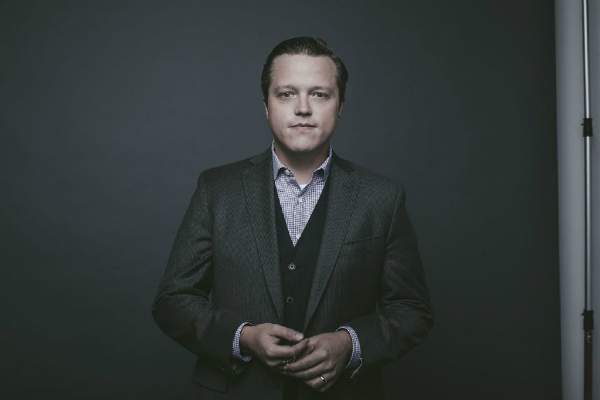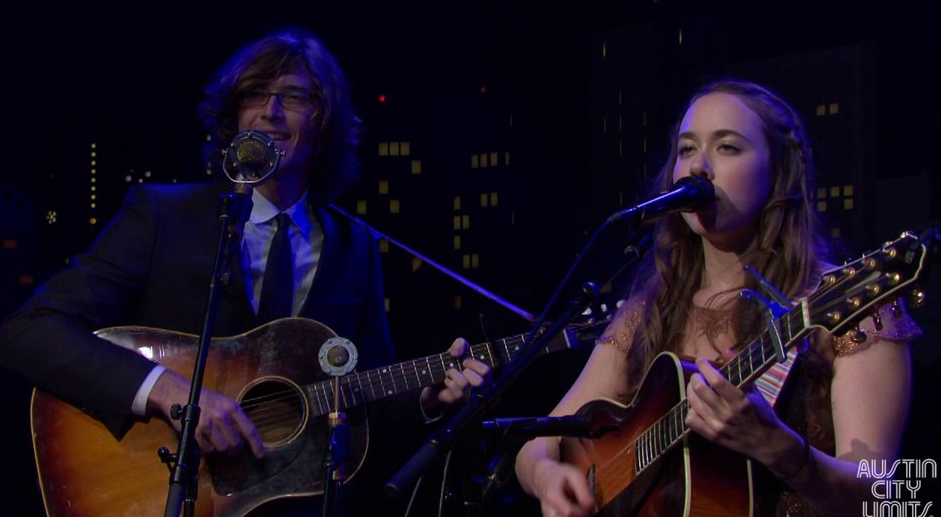
Videos by American Songwriter
Soon our conversation turned to The Milk Carton Kids. Here, a flash of the girl returned and she said, “I’m obsessed! I met them at Telluride this summer and we talked about doing something together . . . I’m excited about what they are doing.” There is no reason to wonder at the animation in her sentiment, for the quality of their work is flat out inspiring. The intense purity of their performance of “Hope Of A Lifetime” at the Americana Music Awards in September electrified the air of the Ryman. Considering the fact that Holly Williams opened the show with a version of her granddaddy’s masterpiece, “I’m So Lonesome,” that could have made Stalin tear up and that Robert Hunter came out and played “Ripple” (thank you, Jim Lauderdale for arranging that) in his first public performance in twelve years, their standout number was all the more an impressive feat.
Since then, I have looked forward to seeing a full show. And so it was that a few hours before the show at Gruene Hall I found myself sitting down at a picnic table in the courtyard talking about art in the present age with Joey Ryan and Kenneth Pattengale. From the Eagle Rock neighborhood in Los Angeles, they could not be further from home. But then again, if Gruene Hall represents a place that is far from corporate privilege and shameless posturing, then they might as well call themselves locals. As we began our discussion I asked them what they thought of Wimberley and their time with Sarah. “Her parents were giving a brief history of what helped Sarah become the artist she is,” Kenneth told me. “And it became clear that Joe and I haven’t benefitted from the tight knit community that surrounds bluegrass . . . and it’s an interesting idea to me how finding a voice as an artist in that setting must be completely different than how I felt coming up in Los Angeles where that kind of community is virtually non-existent. There is no guide as you are finding your own voice and gaining purchase over who you are as an artist. It’s funny we ended up in similar places. For the last half decade or so, perhaps ten years, there seems to be a community forming around whatever the artistic ideals it is we hold ourselves to. Not necessarily our music in particular, but our approach perhaps, or what it stands for in the end. There seems to be a group of people who are laying an infrastructure. That means that ten years from now a couple of kids who set out to do what Joey and I set out to do might benefit from what Sarah benefitted from ten years ago. It might make for an honest revolution toward what we’re all after. Evidence exists that it is forming . . . I think the writing is on the wall.”
The Milk Carton Kids have forged their own way in a very difficult time for anyone without a degree in software engineering or biomedical science. And he is correct; the writing is on the wall. I find little, if any overt political positioning in The Milk Carton Kids body of work, yet through allusion and impression, their work is resonant with a longing for that pure and real something that is hard to define or even articulate, but is the most definitive impulse at work in the unnamable generations, X and Y. After laboring in obscurity for years as solo artists, the two found in one another that kind of artistic connection that doesn’t happen very often. They then proceeded to create some remarkably profound music and did something that is to some, foolish, and to others, controversial, but is actually quite brilliant – they gave away their first two albums.
According to traditional business logic, to give away the product of your labor not as a short-term promotion but permanently, as they have done by making Prologue and Retrospect free for anyone who wants to download the albums, is irrational. To working musicians or to those who think it perfectly acceptable to never buy an album it may seem they are sending the message that they think music should be free. In both cases, drawing those conclusions requires an oversimplification of the new reality of the digital economy. For emerging artists of serious talent, the economic landscape is bleak enough, but for those whose work falls outside an established or currently popular genre the options are these: change your artistic direction to fit a more marketable format and try to cut a deal with a major label, produce your own work and put it up for sale at market price in an economy saturated with free alternatives where it will most likely fall into oblivion, or give it away up front under the premise that the public will inevitably decide regardless and you might make it up on the back end if you keep working your ass off. For artists like The Milk Carton Kids, dumbing down one’s work is a nonstarter and the second option is just as risky as the third, but without one inherent advantage. In giving it away up front, one can create leverage against an incredibly soft market while maintaining artistic integrity at the same time.
Joey Ryan was clear on where he stands in an environment where working musicians are faced with the nonsensical notion that music should be free. I have found, by the way, that the same people who will not pay for music “on principle” are the same ones who piss and moan about bumming a friend a cigarette. Go figure. “It’s easy to make art for its own sake and hold yourself to that standard and not let your art be influenced by ambition or commercialism. But it’s not easy to do if you intend for your art to be the thing you live off of. We perceived from the outset that it is basically impossible to make a living at art. It’s very hard and you have to be very lucky. So, commercialism simply didn’t enter into our thinking. But I would hate for anyone to infer from our business practices of the last two years that we think that music ought not to be paid for . . . I don’t know how to quantify what a piece of music should be worth. At one time it was based on what it cost to produce it and package it and ship it. That’s what its’ price was based on. But when you make it into a digital file that is almost infinitely replicable for virtually nothing, how do you say how much that should be worth? I’m not sure, but it’s not zero and it’s a lot more than ninety-nine cents.”













Leave a Reply
Only members can comment. Become a member. Already a member? Log in.